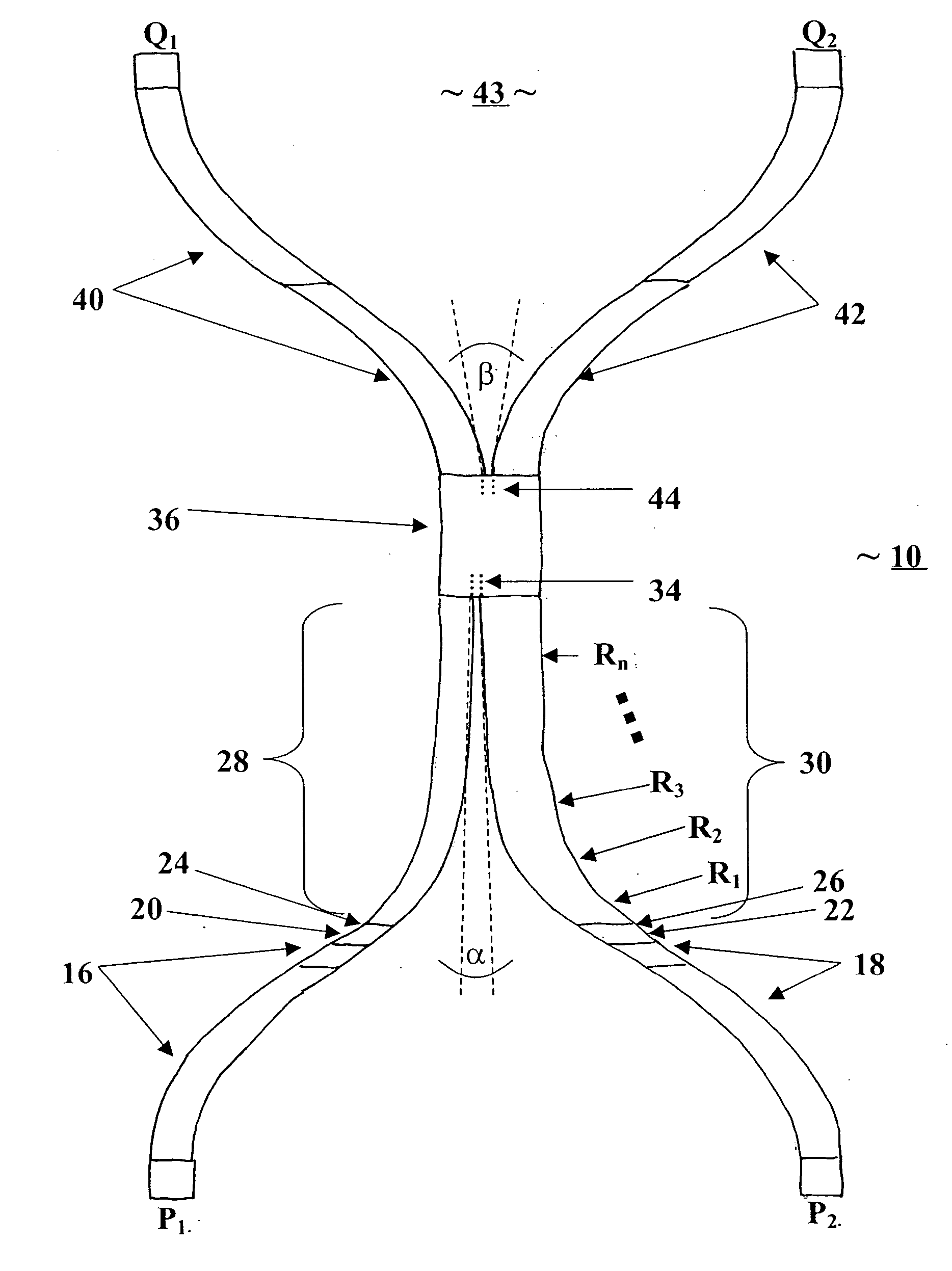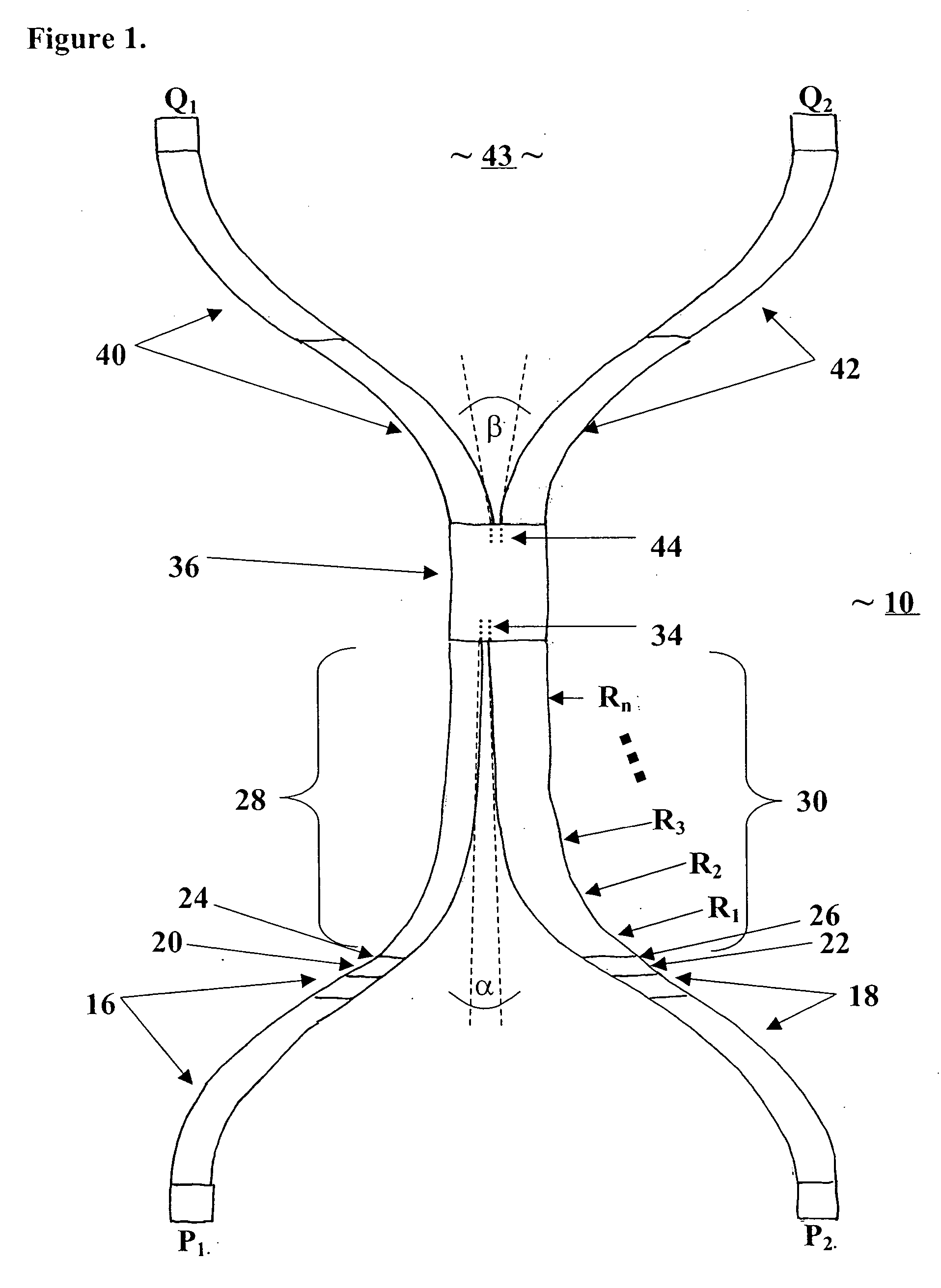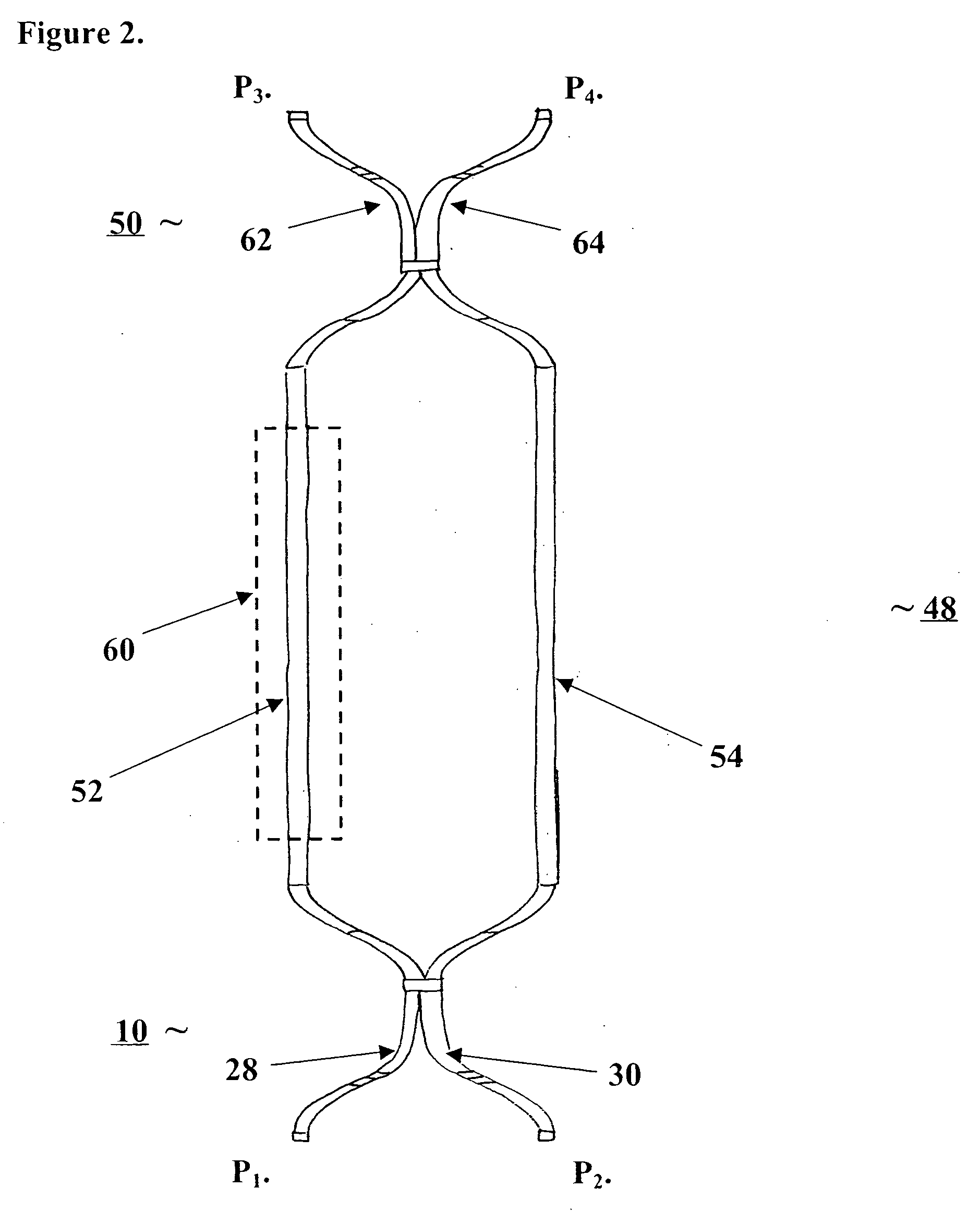High-tolerance broadband-optical switch in planar lightwave circuits
a technology of optical switch and high-tolerance broadband, which is applied in the direction of optics, optical light guides, instruments, etc., can solve the problems of high electrical power consumption, complicated control and production of broadband mzi optical switches
- Summary
- Abstract
- Description
- Claims
- Application Information
AI Technical Summary
Benefits of technology
Problems solved by technology
Method used
Image
Examples
Embodiment Construction
[0047] A broadband optical switch according to the present invention was designed and fabricated in Silica (waveguides) on Silicon (substrate) with .DELTA.n=0.75% (between the core and the clad of the waveguides) utilizing the thermo-optic effect.
[0048] The length of the 2.times.2 configuration (FIG. 2) was about 12 mm, whereas the length of the 1.times.2 configuration (FIG. 3) was about 10 mm. Both devices provided similar performances, except for a better extinction ratio (ER) of the 2.times.2 configuration at the cross output. The ER results (theoretical and experimental) of the 2.times.2 configuration as function of wavelength are depicted in FIG. 4. The theoretical results (full line), obtained via a vectorial finite-difference beam-propagation method, fit the experimental results (full circles) with very high accuracy.
[0049] The device was optimized for highest ER at the middle of the broad wavelength-band range. A very good agreement was obtained between experimental results ...
PUM
| Property | Measurement | Unit |
|---|---|---|
| length | aaaaa | aaaaa |
| length | aaaaa | aaaaa |
| length | aaaaa | aaaaa |
Abstract
Description
Claims
Application Information
 Login to View More
Login to View More - R&D
- Intellectual Property
- Life Sciences
- Materials
- Tech Scout
- Unparalleled Data Quality
- Higher Quality Content
- 60% Fewer Hallucinations
Browse by: Latest US Patents, China's latest patents, Technical Efficacy Thesaurus, Application Domain, Technology Topic, Popular Technical Reports.
© 2025 PatSnap. All rights reserved.Legal|Privacy policy|Modern Slavery Act Transparency Statement|Sitemap|About US| Contact US: help@patsnap.com



